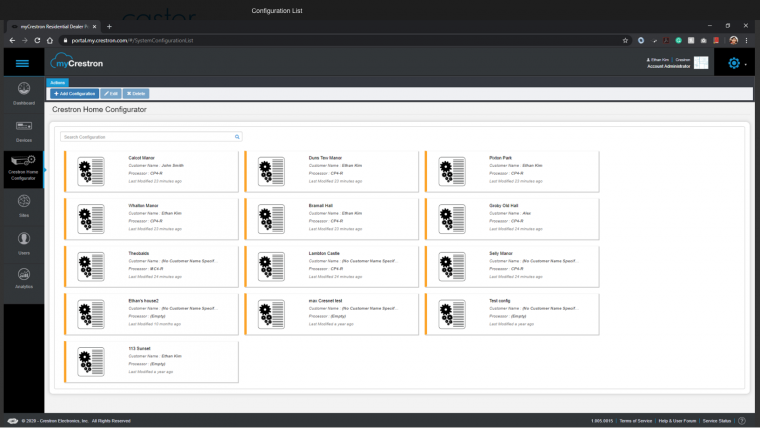
Among the hundreds of vendors at the recent CEDIA Expo who make the home theater gear technology integrators regularly install for luxury clients, Red Carpet Home Cinema, at its first-ever CEDIA appearance, stood out with a unique offering that, in essence, brings the ultra-luxury home entertainment experience full circle: in-home access to first-run movies on the day and date of their release.
Although the service is already being deployed in some luxury homes, “CEDIA was really our coming-out party,” Fred Rosen, Red Carpet’s CEO, tells Connected Design. In fact, the company received a Best Product Award there for Media Servers/Streaming Media/DVRs.


“I was motivated to do this because I felt you could make a luxury product of movies,” Rosen says. Another motivation was the market penetration of all the great new video hardware – namely, Micro LED (Samsung) and Crystal LED (Sony) video walls, and ultra-large-screen TVs. “They’re spectacular, and we wanted to offer something that would work with products from all the major manufacturers. We’re agnostic; the goal is to work with everybody.
“This is a non-disruptive service, for a limited audience – 4,000 or 5,000 homes. We’re not looking to change the movie-going experience for the vast majority of people,” Rosen emphasizes. “That’s not what this is about. Figure it like this: if you have a private plane, or you charter a yacht, or can shop in any of the great stores, the one thing you can’t get is first-run movies in your home – unless you’re in the industry. And now you can.”
This premier-priced movie experience, as described in the company’s press materials, entails membership in the service, achieved after an applications approval process. The client then purchases the $15,000 Red Carpet Media Server, which is the conduit through which the client rents a first-run theatrical release priced anywhere from $1,500 to $3,000 for the privilege of two showings within a 36-hour timeframe.
A digital watermarking function prevents counterfeiting of the movie. The contract entails agreeing not to copy the content or to film the movies, or there is liability attached, Rosen says. If anything is hooked up to the media server, it is programmed to shut off. “What the studios are basically giving you is a $100 million movie your home, the day it comes out. So if that movie were to show up on YouTube, we could trace it back to the box it came from. We want people to enjoy the movie, not abuse the privilege. That’s why there’s an application, and why it’s priced the way it is.” The server will work with any home theater system anywhere in the U.S. and Canada with an available HDMI connection and a static IP address.


Rosen and his business partner, Dan Fellman, have deep, longstanding roots in the movie business – he, at Ticketmaster, and Fellman, in film distribution for Warner – and those relationships made the creation of this service possible.
He emphasizes that the service is not designed to be disruptive to the movie business, or to “change anything in terms of people going to the movies. It’s meant for a very limited number of people who want the privilege of seeing movies in their home the day they come out.
“From my days in ticketing,” Rosen muses, “I always used to say, nobody pays more for a ticket than they want. Underneath this is that this is not a price-sensitive thing – it’s no different than buying an expensive bottle of wine – you can buy a bottle for $3, and you can buy a bottle for $3,000. People do this for the experience, for the convenience, and for the love of movies.
“One of the questions I ask people is, when you watch a movie on any of the streaming services, do you ever watch it uninterrupted? The universal answer,” Rosen says, “is no – the dog barks, somebody talks to you, the phone rings. There’s not the same immersive experience that you get with a major motion picture.
“When you’re showing Joker like this, and, say, the phone rings, you’re not going to answer it. When you’re in a screening room and you’re watching a major motion picture, you are absorbed in the environment that it creates for you. And this is just like being in a Hollywood screening room.”



